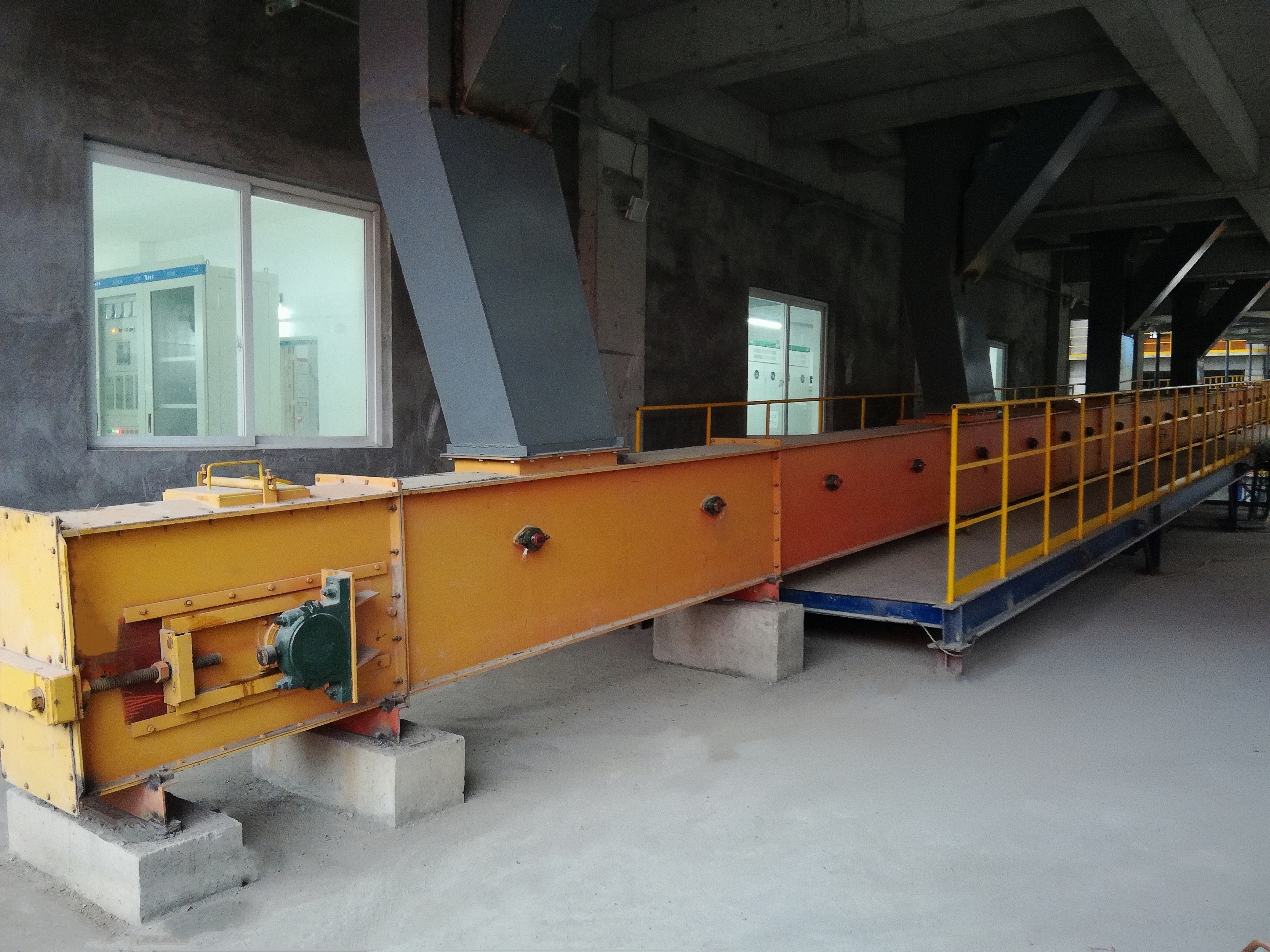En-masse Conveyor Common Failures: Classification and Impacts
Author :
Key Failure Modes of En-masse Conveyors and Their Effects
The common problems of En-masse conveyors may be broadly classified into three major categories: chain failures, abnormal conveyed materials, and drive system problems. Their direct impact is on the equipment's operational efficiency and its service life.
Ⅰ. Core Transmission Component Failures
Equipment incidents essentially involve chain failures, sprocket, and scraper blade failures.
1.Chain Breaking/Elongation
Causes:
• Overtime overload operation, which could lead to chain fatigue.
• The material or manufacturing precision of the chain is insufficient.
• Poor meshing of the chain with the sprocket leading to excessive local stress.
Symptoms:
• Sudden equipment shutdown.
• The chain has become noticeably elongated, and the spacing between the scraper blades has increased.
• Abnormal noise is emitted by the equipment during operation.
2.Chain Jamming
Causes:
• Deformation of the chain or misalignment of the scraper blade.
• Foreign objects placed inside the trough.
• Slack in the chain, which has not been tightened.
Symptoms:
• Sudden increase in motor current.
• The equipment operates intermittently and vibrates violently.
• Destruction of the chain or trough is possible.
3.Sprocket Wear
Causes:
• Prolonged operation at high speeds, resulting in the friction of the sprocket teeth against the rollers of the chain.
• Hard particles contained in the conveyed material contribute to wear.
• Insufficient lubrication.
Symptoms:
• Increased meshing clearance between the chain and sprocket, leading to unstable operation.
• Chain skipping.
• Reduced transmission efficiency; increased motor loads.
Ⅱ.Abnormal Operation of the Conveying System
These concerns are based primarily on the characteristics of the material, the design of the equipment, or improper operation, and they adversely influence the conveying effect.
1.Material Blockage
Causes:
• Exceeding the conveying capacity rated for the equipment.
• High moisture content and viscosity of the material, which tend to agglomerate in the trough.
• A poorly designed feed inlet causes blockages in the flow.
Symptoms:
• A significant reduction or stop in the discharge volume.
• Material accumulated in the trough and a sudden increase in equipment load.
• Backflow of materials occurs at the feed inlet.
2.Material-Induced Trough Wear
Causes:
• High hardness of the conveyed material (ore, quartz sand).
• Excessive material flow velocity, causing erosion of the trough floor and side walls.
Symptoms:
• Gradual thinning of the trough wall, leading to material leakage.
• Increased dust leakage during conveying.
• Scratches or dents appearing on the trough.
3.Scraper Wear/Deformation
Causes:
• Long-term friction between the scraper and the trough floor.
• Impact of the material or foreign objects hitting the scraper.
• Inappropriate material selection for the scraper.
Symptoms:
• Incomplete material scraping, resulting in increased residual material in the trough.
• Scraper bending or breaking.
• Reduced conveying efficiency.
Ⅲ.Drive and Auxiliary System Issues
The drive system is the source of power, while the auxiliary system ensures the stable operation of the equipment. Failures in either can directly lead to the equipment not functioning properly.
1.Motor Failures
Causes:
• Frequent starting or overloading may cause the motor to burn out.
• Poor motor heat dissipation leads to overly high temperatures.
• Oil absence or damage to motor bearings.
Symptoms:
• The motor will not start or stop shortly after starting.
• The motor vibrates and produces a lot of noise during operation.
• The casing temperature of the motor exceeds the value marked.
2.Reducer Failures
Causes:
• Lack of lubricating oil or deteriorated quality of lubricating oil in the reducer.
• Gear wear and surface scuffing.
• Worn-out bearings.
Symptoms:
• Unusual noise from the reducer.
• The output speed decreases, showing a decrease in the speed of the equipment during conveying.
• The casing heats up, and when the condition is critical, there is an oil leak.
3.Tensioning Device Failure
Causes:
• Rust and seizure of the tensioning screw.
• Jamming or insufficient counterweight in the weight tensioning device.
• Fatigue failure of the tensioning spring.
Symptoms:
• Chain slack, resulting in poor meshing with the sprocket.
• Chain jumping and loud noise during operation.
• Increased likelihood of chain derailment or jamming.
Ⅳ. General Preventive and Resolution Suggestions
1.Regular Inspection and Maintenance
Chain tension and wear must be inspected regularly, and adjustments or renewals are to be anticipated.
Repairing the worn condition of the sprockets and scraper is continued.
It is necessary to provide regular changes of lubricating oil in the reducer so that good lubrication in the motor, bearings, and other parts is provided.
2.Operation and Material Management Optimization
Strictly control the conveying capacity to avoid overloading.
For materials with high moisture content and high viscosity,drying in advance or adding anti-caking agents is recommended.
Regarding the screens at the feed inlet, uniform feeding should be ensured. This prevents any foreign objects from entering the trough.
3.Proper Choice and Design
The chain, scraper blade, and trough are selected based on the material's properties, such as hardness, moisture content, and particle size.
Trough structure optimization—wear-resistant liners are to be installed at places subjected to high wear; feeding and discharging openings should be rationally designed to minimize the possibility of blockage by the material conveyed.
En-masse conveyor
Get a Free Quote
We sincerely welcome you to write to us, call us to inquire about our business, visit us, inspect us, buy us and adopt us. You have any questions you can write to call, you can also leave a message on this site, the site administrator will do our best to provide you with the most efficient service.








